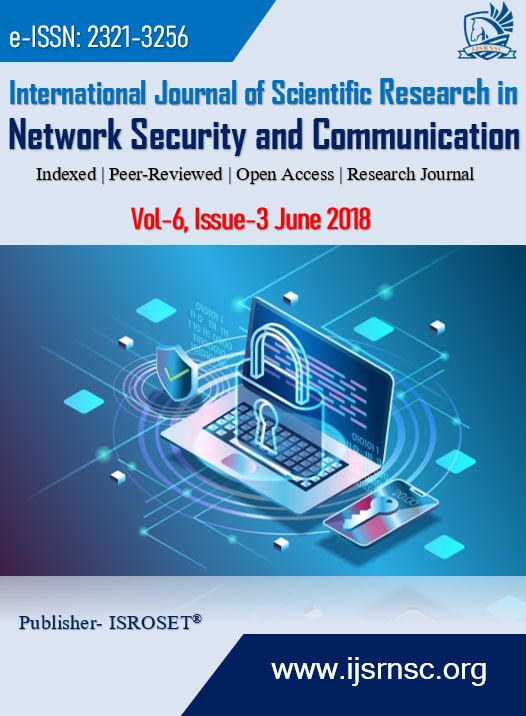Separating Moving Objects from Stationary Background using Dynamic Mode Decomposition
Keywords:
Background/Foreground Separation, SBI Dataset, Dynamic Mode Decomposition (DMD), SegmentationAbstract
Real-time background/foreground separation of a video is necessary for detecting an object, identifying, tracking vehicle, as well as recognizing objects. Several algorithms were already found for background initialization and foreground detection. Recent examinations have presented a robust method, Dynamic Mode Decomposition (DMD) for separating video frames into a background (low-rank) model and foreground (sparse) segments. The full video stream first converted to frames and applied DMD on each frame for the separation of background/foreground objects. Since the method uses full video frames it had more computational complexity and difficult to analyze. For a better solution, this paper shows that the large continuous video stream first converted to frames and each frame breaks into segments and then DMD applied on the segment where the moving object or foreground is obtained. The issue using DMD is the burden of working with large information and now it can be easy work using the segmented video frames. The strength of DMD is demonstrated using a publicly available Scene Background Initialisation (SBI) dataset. The objective of this work is to obtain a background/foreground model from a video sequence where the background is filled with a number of foreground objects with less complexity. Finally compared the accuracy parameters between different background/foreground separation methods with DMD and shows the performance of DMD_Segmented is much better.
References
David Windridge, “Can DMD Obtain a Scene Background in Color?”, Department of Computer Science Middlesex University International Conference on Image, Vision and Computing 2016
J. Grosek and J. Nathan, “Dynamic Mode Decomposition for Real-Time Background/Foreground Separation in Video.”, Kutz, arXiv:1404.7592v1 [cs.CV], 30 Apr 2014
Lucia Maddalena, “The SOBS algorithm: what are the limits?”, National Research Council, Institute for High-Performance Computing and Networking Via P. Castellino 111, 80131 Naples, Italy,2012
Hanzi Wang and David Suter, “Background Initialization with A New Robust Statistical Approach.”, Institute for Vision System Engineering Department of. Electrical. and Computer Systems Engineering Monash University, Clayton 3800, Victoria, Australia, Proceedings 2nd Joint IEEE International Workshop on VS-PETS, Beijing, October 15-16, 2005
Vikas Reddy, Conrad Sanderson, and Brian C. Lovell, “A Low-Complexity Algorithm for Static Background Estimation from Cluttered Image Sequences in Surveillance Contexts.”, Hindawi Publishing Corporation EURASIP Journal on Image and Video Processing, Volume 2011
Aseem Agarwala, Mira Dontcheva, Maneesh Agrawala, Steven ,Alex Colburn,Brian Curless, David Salesin, Michael Cohen, “Interactive Digital Photomontage.”, University of Washington
Maboud F.Kaloorazi and Rodrigo C. de Lamare CETUC ,“Switched-Randomized Robust PCA for Foreground and Background Separation in Video Surveillance.”, , Pontifical Catholic University of Rio de Janeiro, Brazil
Lekshmi Ramesh ,“R-SpaRCS : An Algorithm for Foreground-Background Separation of Compressively-Sensed Surveillance Videos.”, DAIICT Gandhinagar, India and Pratik Shah IIIT Vadodara, 978-1-4673-7632-7/15/$31.00c IEEE India,2015
Dong Tian, Hassan Mansour, Anthony Vetro ,“Depth-Weighted Group-Wise Principal Component Analysis for Video Foreground/Background separation”, Mitsubishi Electric Research Labs .(MERL) Cambridge, Massachusetts, USA,2015
Xinchen Ye, Jingyu Yang, Xin Sun, Kun Li, Chunping Hou, and Yao Wang, Fellow , “Foreground-Background Separation From Video Clips via Motion- Assisted Matrix Restoration” , IEEE Transactions on Circuits and Systems for Video Technology,2015
J. H. Tu, C. W. Rowley, D. M.Luchtenburg, S. L. Brunton, and J. N. Kutz, “On dynamic mode decomposition: theory and applications.”, arXiv preprint arXiv:1312.0041, 2013
J.Nathan Kutz, Xing Fu and Steven L. Brunton, “Multi-resolution dynamic mode decomposition for foreground/background separation and object tracking.”, Applied Mathematics University of Washington, Seattle, WA98195,2000
Jonathan H. Tu, “Dynamic Mode Decomposition: Theory and Applications.” A Dissertation Presented to the Faculty of Princeton University in Candidacy for the Degree of Doctor of Philosophy, Recommended for Acceptance by the Department of Mechanical and Aerospace Engineering Adviser: Clarence W. Rowley III September 2013
Kevin K. Chen, Jonathan H. Tu, and Clarence W. Rowley, “Variants of dynamic mode decomposition: boundary conditions, Koopman, and Fourier analyses.”, Department of Mechanical & Aerospace Engineering, Princeton University, Princeton, NJ 08544 Oct 24, 2011
Fredrik Raak, Yoshihiko Susuki, Igor Mezi´c, and Takashi Hikihara, “On Koopman and Dynamic Mode Decompositions for Application to Dynamic Data with Low Spatial Dimension.”, IEEE 55th Conference on Decision and Control (CDC) ARIA Resort & Casino December 12-14, 2016, Las Vegas, USA, 2016
Downloads
Published
How to Cite
Issue
Section
License

This work is licensed under a Creative Commons Attribution 4.0 International License.
Authors contributing to this journal agree to publish their articles under the Creative Commons Attribution 4.0 International License, allowing third parties to share their work (copy, distribute, transmit) and to adapt it, under the condition that the authors are given credit and that in the event of reuse or distribution, the terms of this license are made clear.









